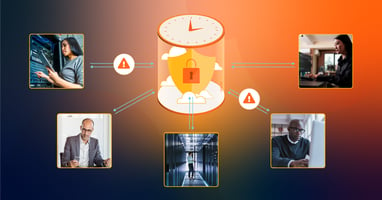The COVID-19 Pandemic has transformed the technology landscape of the modern workplace. Since its beginning, the Pandemic has pushed businesses to demonstrate their preparedness to deal with unprecedented fluctuations in technological demands. With a greater portion of the labor force working remotely, Cybersecurity operations are faced with novel challenges. The new working arrangements have led to an increase in the use of cloud-based applications. Your company's Cybersecurity experts need to adopt stronger and more effective policies that address cloud computing security to ensure business continuity. This article addresses how your network's cloud computing security should change amidst COVID-19.
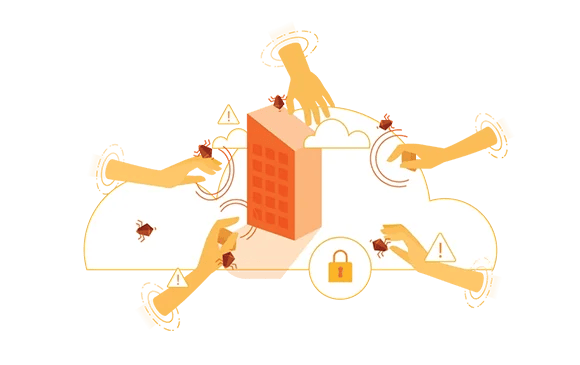
As COVID-19 persists, enterprises increasingly rely on the cloud, leading to the emergence of newer threats. By enhancing their cloud computing security strategy, firms will experience such novel benefits as lower maintenance costs and real-time threat monitoring. This means that firms can protect their sensitive business and financial data without denting financial budgets. Cloud-based security tools have also grown to meet the changing business landscape, enhancing data sovereignty. This effectiveness has seen nearly 88% of Fortune-500 companies adopting Cloud-based security tools as part of their cybersecurity strategy.
What is Cloud Computing Security?
Cloud computing security encompasses all the policies, technologies, procedures, and controls that a firm puts in place to protect their cloud-based resources. These tools work together to ensure that a firm's cloud computing environment is safe from hackers, malware, unauthorized access, and other threats that arise within the cloud framework. Besides protecting company data, a firm's Cloud Computing Security Strategy also ensures client privacy is upheld and supports regulatory compliance. As the business environment changes and threats evolve amidst COVID-19, so too should your firm's cloud computing security strategy.
Why is Cloud Computing Security So Important?
If your company is moving operations to the cloud, it is imperative to address Cloud Computing security. Due to improved connectivity and an increase in mobile device use, your cloud-based applications present a larger host of security risks than your on-site data center. With a solid Cloud Computing Security Strategy, you will have centralized control over security functions.
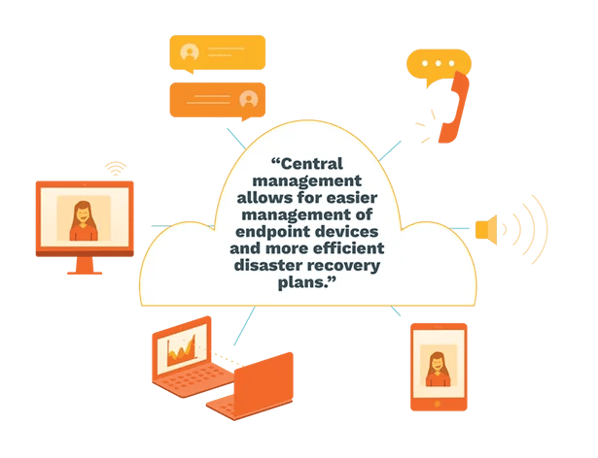
This post discusses how your network's Cloud Computing Strategy Needs to Change amidst the COVID-19 Pandemic. We will highlight the five essential core attributes of a network's cloud computing that a network strategy should address, namely:
- Data Encryption
- Back-Up and Recovery Plans
- Authentication
- Data Monitoring
- User security
We’ll discuss all the five aspects of the cloud computing security strategy that need to change for the longevity of your company due to the rippling effects of the Pandemic.
1. Encryption of Cloud Data
Data encryption is a critical part of your Business Continuity Plan in the post-pandemic period. As attacks targeting cloud-based business resources are rising, your IT department and Chief Information Security Officer should work to secure data, both in storage and on transit. The main concern with cloud adoption is the safety and privacy of data. Unlike on-site data centers, with the cloud, you hand over the storage of your information and applications to the service provider.
Cloud Data Encryption lets your cloud provider secure your information before it goes to the cloud environment. They then hand over the encryption keys to your IT experts so information can be decrypted when necessary. Your cloud computing security strategy should include a policy for who gets responsibility for these keys. The policy should also have measures that govern the trust relationship between the cloud provider and your IT personnel. Encryption is one of the most effective strategies to secure your cloud-based data since it makes your company information difficult to decipher by unauthorized individuals.
So, What Needs to Change?
Data encryption has been around for years but as an option for most companies. Most of the companies that employed data encryption prior to the Pandemic only used the most basic encryption methods, which are prone to attacks by brute force hackers who try millions of random decryption keys until they find the right key.
Following a rise in the number of attacks on small businesses' cloud computing systems during the COVID-19 Pandemic, encryption of cloud data has become a basic necessity. If your company didn’t incorporate the use of data encryption tools, used weak keys, or used basic encryption methods before the COVID-19 Pandemic, this is the time to give thorough encryption a thought. Your data security strategy should change to incorporate end-to-end data encryption to prevent interception by cybercriminals.
2. A Data Backup and Recovery Plan
When on-site data centers were the norm, data backup, and recovery consisted of just having multiple company information instances. This would be used to restore most business functions until a threat was dealt with. As more companies move to the cloud, the process should expand to accommodate end devices and Shadow IT requirements.
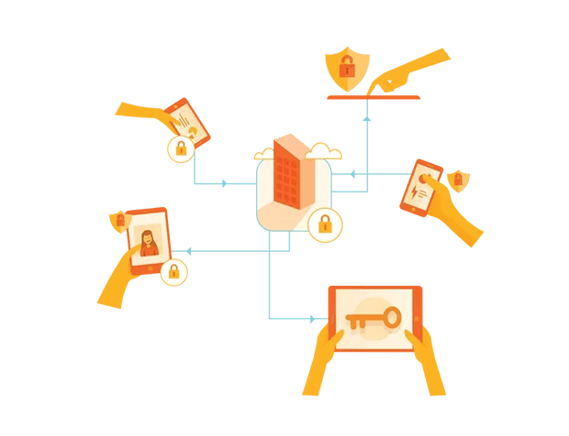
With a larger portion of your workforce using personal devices to access company resources, they are highly susceptible to social engineering strategies. Additionally, most businesses rely on unfamiliar technologies to cater for an increasingly flexible workforce. Ransomware attacks on these systems and devices cost thousands per incident due to downtime. A common reason for the attacks is to destroy your company data or make it unusable. A proper cloud backup and recovery plan will ensure your business continuity in case of such an attack.
So, What Needs to Change?
More than ever, there's a surge in the number of attacks on cloud computing platforms. You can almost be sure that someone will at least attempt to hack your cloud data. If the attacker successfully retrieves the private data under your care, the repercussions would be disastrous, and your job might be on the line.
Few companies backup their cloud computing data regularly, or have a recovery plan. With the rise of attacks on cloud computing infrastructure amidst the Pandemic, it is fundamental that you make backing up cloud computing data an intrinsic part of your cloud computing security strategy.
Most cloud computing providers may create the backups for you automatically every month, but it’s best if you don’t take risks, have someone do it manually regularly on purpose.
3. Continuous Monitoring of Your Cloud Computing Environment
One of the greatest effects of the shifting workforce is the unprecedented number of devices accessing company networks. While you can configure your services to meet these devices' network demands, you will need to monitor them for suspicious activity constantly. Most cloud subscriptions come with tools that let your administrators constantly review your cloud environment's health and status. This should be part of your daily IT housekeeping roster.
Constant monitoring helps your administrators identify unwanted devices, risks, and inefficiencies in your cloud network. If you are using the public cloud, your action is limited to observing network traffic and infrastructure. With the private cloud, you get ultimate control and flexibility, so you can identify potential issues and act on them before they disrupt the workflow.
Unusual patterns could point to a data breach in your IT system, so spotting them in time can stop the attacker in their tracks and enable you to fix the vulnerability and also beef up security to prevent a disaster.
So, What Needs to Change?
With a larger percentage of your workforce working from home, cybercriminals have more loopholes to access your cloud data than they did prior to the Pandemic. If they somehow manage to access the data, they would, in the worst-case scenario, shut down your organization's operations—and that's something you don't want to take chances on. It is, therefore, imperative that your cloud computing security strategy incorporates a continuous real-time monitoring solution.
Suppose your network's cloud computing security strategy does not address users' real-time monitoring amidst the Pandemic—it should change to incorporate tools that track users, and raise a red flag whenever there's a suspicious access log. If your cloud provider offers this service, your strategy should define exactly what they monitor and their responses to threats. In case their monitoring service is not sufficient for your security needs, you can purchase advanced service levels from third party vendors.
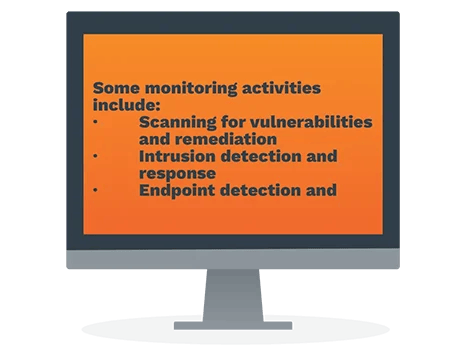
Monitoring is crucial to the continued performance of your cloud environment. As you manage the workflow and traffic on your cloud infrastructure, control, and visibility should be top of your priorities list. Proper monitoring tools will also give you complete security compliance.
4. Improved Security from the User’s End
The adoption of the cloud means that company employees and clients will have on-demand access to your firm's information and applications. Your administrators need to define and assign roles, responsibilities, and authorization for every intended user. Your cloud provider should include Identity and Access management functionality, so only the right individuals can access and alter your cloud-based data.
Given the number of users and devices able to access your network, you'll need a robust authentication framework. This means that your company's high-value applications, information, and client data are only available to authorized individuals. End-user security also encompasses all moves geared toward the protection of personally identifiable information. Your cloud security strategy should include a service agreement that ensures you protect employee and client data from unwarranted access.
So, What Needs to Change?
Small businesses are struggling with managing access to their cloud computing resources, especially with the company leaders implementing work-from-home procedures following the Pandemic. You can never be too sure of who’s on the other end of the computing system. There's always a threat hovering over the cloud computing platform, hoping for an opportunity to launch a disaster.
The first step in enhancing cloud computing security for users is training the users on cloud computing security and their role in fortifying the security—so you need to make the training an inherent part of the security strategy. The strategy should also change to adopt a procedure that limits the number of devices they use to access the cloud environments, use the cloud computing environment only as appropriate, ensure data encryption, and regularly scan their malware devices.
5. Deploy a Multi-Factor Authentication (MFA)
Multi-factor Authentication is a cloud security best practice that strengthens the company and individual data protection. In addition to the traditional username and password login prompt, this system uses a Cloud Access Management system to evaluate a user's legitimacy based on various factors. Multi-factor Authentication adds an extra level of security and provides your administrators with insight into false logging tactics.
To avert attacks due to stolen credentials, your network’s cloud computing security strategy should change to include a fool-proof multi-factor authentication for all users. MFA will ensure that only the authorized employees and stakeholders can access your organization’s cloud applications and access private data.

So, What Needs to Change?
Come to think of it, how safe is your cloud data without a multi-factor authentication? MFA is arguably the most difficult security system to hack. It has many perks and probably only a few reasons why you wouldn't consider it. With the security of your cloud data on the line, an MFA should be a natural part of your cloud computing security apparatus. If your company doesn't use a two-factor authentication yet, the strategy should change to adopt it.
The major advantage of MFA is that it's based on cheap technology and yet the most effective means to prevent hacking of credentials. If your strategy has been negligent of two-factor Authentication, during this Pandemic is the time you need it the most. MFA reduces the cost of Authentication while keeping your firm's information safe from Social Engineering attacks.
The Permanent Move to Digitization
Nobody knows the end of the COVID-19 Pandemic for sure, but it has left its mark on how companies view remote-work policies and digitization. Cloud computing is a considerably affordable on-demand computer systems resource that provides companies with data storage, data backup, and computing power. Cloud computing offers tremendous strategic flexibility and scalability for numerous services that have become integral to people, especially during the Pandemic.
By effecting these changes into your security strategy, your CISO and administrators can maintain business continuity and uphold your firm’s cloud security. It will also help with choosing, setting up, accessing, monitoring, and securing cloud computing.
Categories: Cloud Computing Security, Cloud Computing









